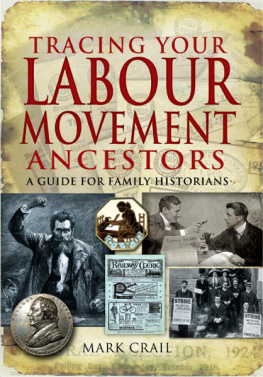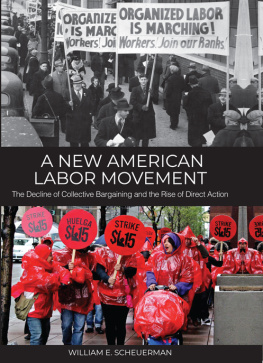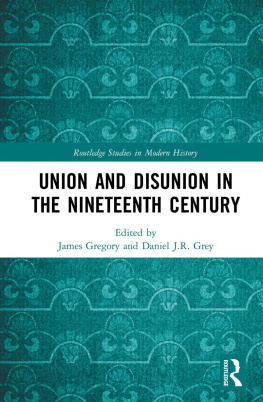A N EW L ABOR M OVEMENT
FOR THE N EW C ENTURY
LABOR IN AMERICA
VOLUME 5
GARLAND REFERENCE LIBRARY OF SOCIAL SCIENCE
VOLUME 1126
L ABOR IN A MERICA
DAN GEORGAKAS, Series Editor
RACE, ETHNICITY, AND GENDER | THE MEANING OF |
IN EARLY TWENTIETH-CENTURY | SLAVERY IN THE NORTH |
AMERICAN SOCIALISM | edited by David Roediger |
edited by Sally M. Miller | and Martin H. Blatt |
WORK, RECREATION, AND CULTURE | A NEW LABOR MOVEMENT |
Essays on Labor and Culture | FOR THE NEW CENTURY |
edited by Martin H. Blatt | edited by Gregory Mantsios |
and Martha K. Norkunas |
FROM THE KNIGHTS OF LABOR |
TO THE NEW WORLD ORDER |
Essays in American Labor History |
by Paul Buhle |
A N EW L ABOR M OVEMENT
FOR THE N EW C ENTURY
EDITED BY
GREGORY MANTSIOS
First published by Garland Publishing, Inc.
This edition by Routledge:
Routledge | Routledge |
Taylor & Francis Group | Taylor & Francis Group |
2 Park Square, Milton Park | 711 Third Avenue |
Abingdon, Oxon OX14 4RN | New York, NY 10017 |
Copyright 1998 by Gregory Mantsios
All rights reserved
Library of Congress Cataloging-in-Publication Data
A new labor movement for the new century / edited by Gregory Mantsios.
p. cm. (Garland reference library of social science ; v.
1126. Labor in America ; v. 5)
Includes index.
ISBN 08153-2473-1 (hardcover : alk. paper)
1. Labor movementUnited States. 2. Labor policyUnited States. 3. Trade-unionsUnited States. 4. Labor movementUnited States Political activity. 5. Trade-unionsUnited StatesPolitical activity. I. Mantsios, Gregory. II. Series: Garland reference library of social science ; v. 1126. III. Series: Garland reference library of social science. Labor in America ; v. 5.
HD8072.5.N484 1998
All royalties from this anthology will be used to support student scholarships. These scholarships will be made available to students enrolled in the Queens College Bachelor of Applied Social Science Programa special degree program designed to prepare students for advocacy work with unions, community organizations, and government.
Cover art designed by Steven Dana.
Series Editor's Foreword
Whereas previous titles in the series LABOR IN AMERICA looked backward at the various achievements found in the complex history of organized labor in this country, A New Labor Movement for the New Century focuses on contemporary issues and the immediate future. That focus, however, is historically well informed, seeking to recover strategies that were successful in the past and to avoid errors, particularly with regard to the kinds of issues examined in earlier volumes.
For the contributors to this book, the contested election in 1995 for leadership of the AFL-CIO was a watershed event. The victory of the New Voice slate led by John Sweeney is not seen as an automatic fix to all that has troubled the labor movement, but as an opening of the door to a serious reorganization and reorientation. They are greatly heartened that the New Voice team candidly acknowledged the movement's shortcomings even as it asserted its desire to reanimate the movement's historic mission.
Taking their cue from the many forces that ultimately produced the change in AFL-CIO leadership, the authors here examine the problem areas troubling organized labor. While hopeful about the prospects for change, they indicate that if labor does not change then the movement as we have known it is probably doomed. Dire as this assumption might be, the changes advocated (with the exception of labor's role in the international union movement) are rarely fundamental breaks with the past or entirely novel ideas. Instead, the proposals elaborate on current strategies that have proven effective. In this sense, the authors seek to be catalysts in processes already in motion. If this decreases the impact of what they propose, it also increases the possibility that their suggestions can indeed be implemented in the near future.
These authors are not the usual set of outside critics or losers in bureaucratic infighting. As their impressive credentials indicate, they have worked long and hard in the house of labor, advocating their ideas within the organizations of the trade unions where the consequences of decisionsgood and badare felt immediately in daily life. As officials in local and national unions, they have to answer to their memberships for ill-conceived or poorly executed programs. They are also in a position to hear what issues truly concern the membership.
Rather than denouncing internal critics as disrupting labor's unity or offering enemies points of attack, President Sweeney (in his Afterword to the volume) actively encourages the public airing of different proposals, whether to his liking or not. He also indicates that in a movement as large as the AFL-CIO, different strategies can be tested in different arenas: diversity can be a component of strength rather than weakness.
Editor Gregory Mantsios and his contributors are determined to see the trade union movement regain at least as much political influence as it enjoyed during the 1940s and 1950s, when a little over one-third of all working Americans were unionized. They also have a bolder, longer-range concept of the centrality of working people to the democracy of the coming millennium. They believe that the obituaries for organized labor in America are indeed premature. If American labor is able to realize the opportunities they outline in this book, then the best is yet to come.
Dan Georgakas
Acknowledgments
All of us at the Labor Resource Center are grateful to the individuals who made this anthology possible. First, we want to thank each of the contributors for their willingness to devote the time and energy this project required. We invited them to submit essays because we have great admiration for their work; that admiration has grown as we have come to better understand the ideas that inspire and motivate that work. A large measure of our thanks must go to Dan Georgakas, the editor for Garland's labor series, who first suggested the book, served as a reader, and provided suggestions from the very first conceptualization of the book to the finest details of the finished product.
Major contributions to the production of this volume were also made by individuals whose names do not appear in the table of contents. Margarita Coln Ortiz did an enormous amount of work on this project and had the unenviable task of tracking submissions, making corrections, formatting, and proofreading; she did all this while adding her insights, good judgment, and good humor to the process. Laura McClure and Mark Levitan served as readers and provided thoughtful comments and excellent editorial suggestions for each of the essays. In a number of instances, they worked very closely with authors to help them prepare their essays. Deborah D'Amico and Paula Finn also worked extensively with authors to prepare essays; their knowledge of the labor movement and craft for writing made for important additions to the collection. Paula Rothenberg read, re-read, and re-read again a number of sections and provided critical comments and suggestions.










